The Homestead Act of 1862 offered a turning point in the lives of many Americans. Up to this point, for so many individuals and families, the prospect of land ownership was nothing more than a distant dream.
Prior to the Homestead Act, someone wishing to purchase unsettled federal land was required to purchase a minimum of 320 acres at the rate of $1.25 per acre (previously reduced from a minimum of 620 acres at $1.00 per acre in the year 1800). According to the National Archives, “The investment needed to purchase these large plots and the massive amount of physical labor required to clear the land for agriculture were often insurmountable obstacles.”
This historic piece of legislation, which would ease some of these burdens, was finally pushed through the U.S. Senate in 1862 after many failed attempts in years prior (and thanks in part to the secession of Southern states from the Union) and was signed into law on May 20 by President Lincoln.
This Homestead Act made it possible for any current, or intended, U.S. citizen to lay claim to a 160 acre parcel of land with no initial fee. The individual was then required to occupy the land for a period of five years and to make certain improvements upon the land during this time. These improvements consisted of constructing a dwelling of a certain size, as well as growing crops on the land.
After the stipulations had been met, the resident was able to file a for a patent on the land with the local land office. Under the Act, patents could also be acquired by purchasing the land at a rate of $1.25 per acre and a completing a 6-month period of residency on said land.
It’s important to know that not all land patents were issued under the Homestead Act – there were several other types of patents that were granted to individuals throughout the 19th and into the early 20th century. These included cash entry, credit, military warrants and Indian patents, to name a few. Here you can find a detailed breakdown of the various kinds of land patents that have existed over the years.
Land patents can be an excellent resource for family historians. Why you might ask? Well, a land patent ties an individual (or family group) to a certain physical location and exact time period. For example, when it comes to patents granted under the Homestead Act, it is likely that any person who filed a claim and then received a deed for a parcel of land was living and working in a certain physical location for at least the required 5 year period, beginning at the time the claim was issued.
The Bureau of Land Management (BLM) offers a huge number of free land patent records through their General Land Office (GLO) Records collection. In fact, the BLM is truly a wealth of information for getting to know your ancestors, providing free image access to over 5 million federal land title records dating back to 1788.
If you are hoping to take advantage of this potential treasure-trove of information relating to your ancestors, you won’t be disappointed. BLM land patent records are all easily searchable through the General Land Office Records database, found here.
To get started, select the “search documents by type” tab and then choose “patents” on the left sidebar. To search only original Homestead Act patents choose “Homestead EntryOriginal” under “Authority” in the Miscellaneous area. To search all patents do not choose an option.
You can then choose a state from the drop-down menu and a county, if you wish. You can also search all included states at once. (Note: not all U.S. states are included in the GLO database.)
Next enter the first and last name of the individual who filed the patent or just a surname for a broader search. If you are unsure of the spelling of a family member’s name, or are trying to narrow the results of a very common surname, try searching using a “wildcard”, which you can find more information about here.
When you are ready, click search near the bottom of the page. Your results should look something like this:
There is also the option to search by land description, if you are interested in narrowing down ownership by location. This is a good option for exploring relatives that may have settled nearby or to search an area for someone you suspect may have lived there, but who is not coming up in search.
You can also further narrow your search by adding more details in the “miscellaneous” section, including which land office recorded the patent and the date of issuance or the document number.
Once you have found a result of interest on the list, open it by clicking the link under the “Accession” heading. From there you can view the original land patent document by choosing the “Land Patent” tab on the top-middle. These documents are also able to be downloaded by hovering your mouse over the image and clicking the arrow icon on the upper-right:
You can view just the details of the document under the “Patent Details” tab on the top-left. This page also includes a map feature which will show you the exact location of the parcel(s) of interest (simply check the box near the land description).
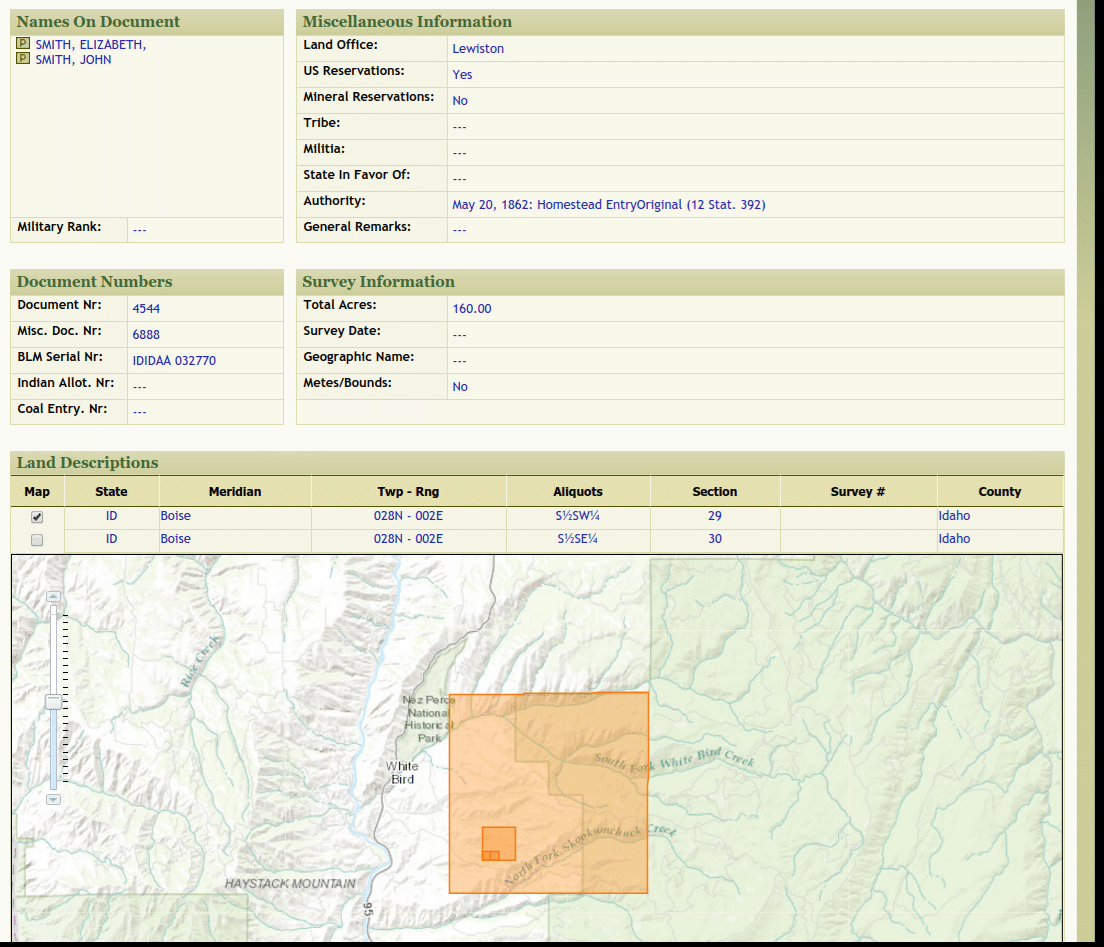
Excited yet? Going going on your land patent search right now!
By Kate Jackson, Associate Editor, Family History Daily
Image Above: Man standing on ramp in front of Daniel Freeman homestead in Gage County, Nebraska, the first homestead claim under the 1862 Homestead Act; large piles of wood in yard. 1906. Library of Congress
Image at Top of Article: The Homestead Act, combined with other factors, unleashed a movement of people that lasted into the 20th Century. In this photo, emigrants arrive at the Gates Post Office in Custer County in 1886. Wagon trains became the stuff of legends. Photo by Solomon Butcher. Nebraska State Historical Society
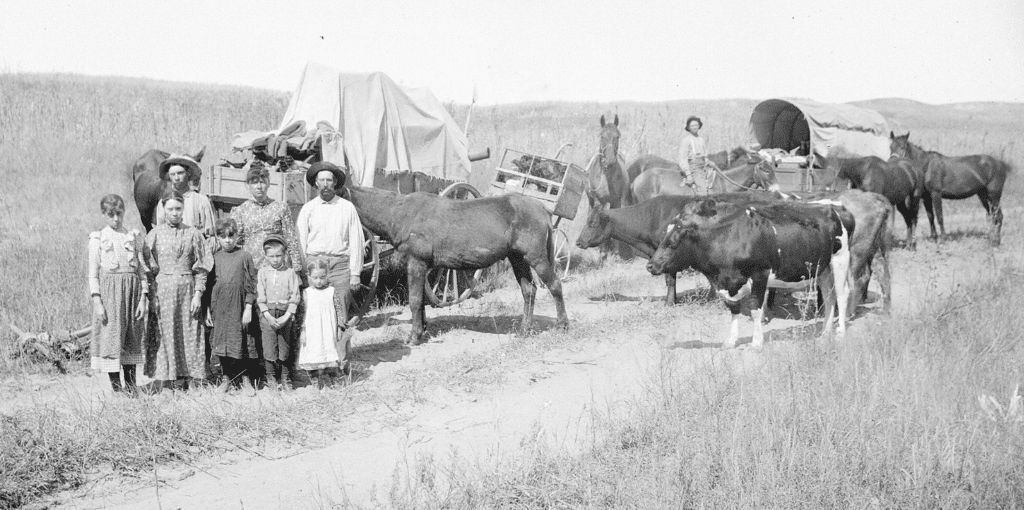
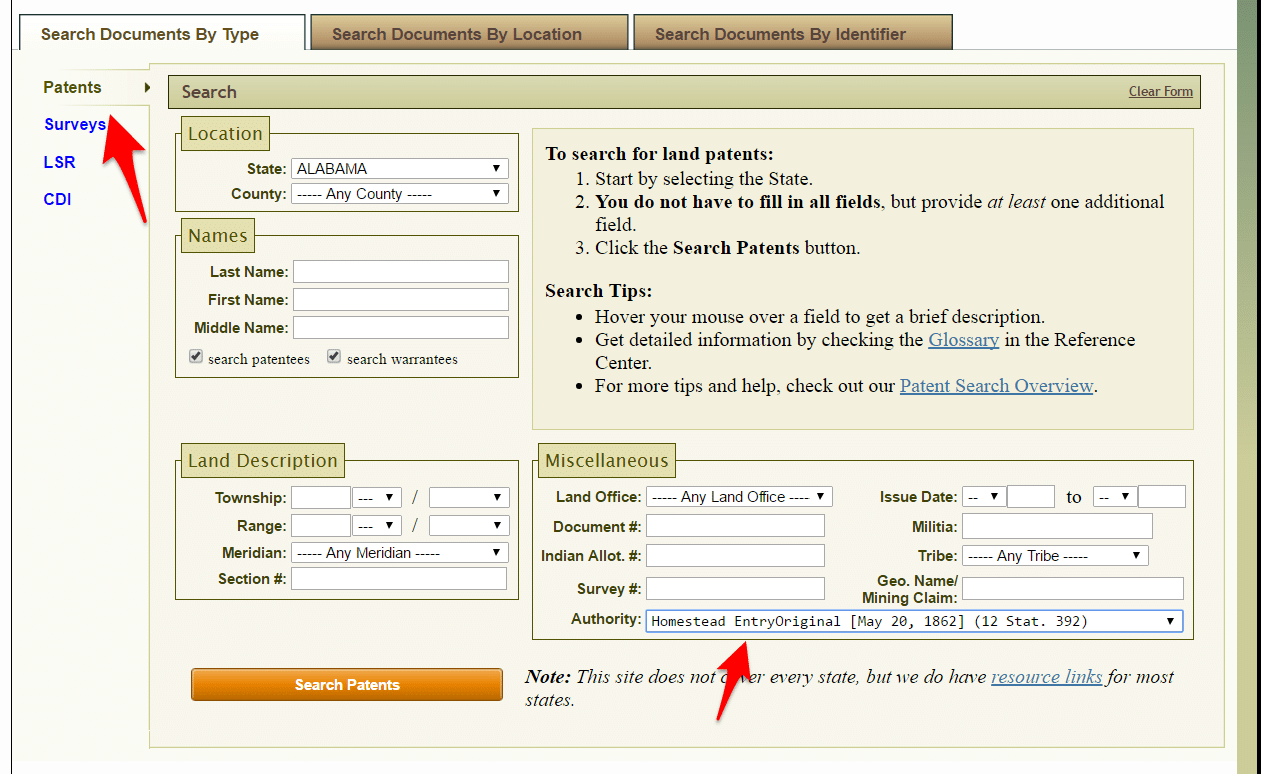

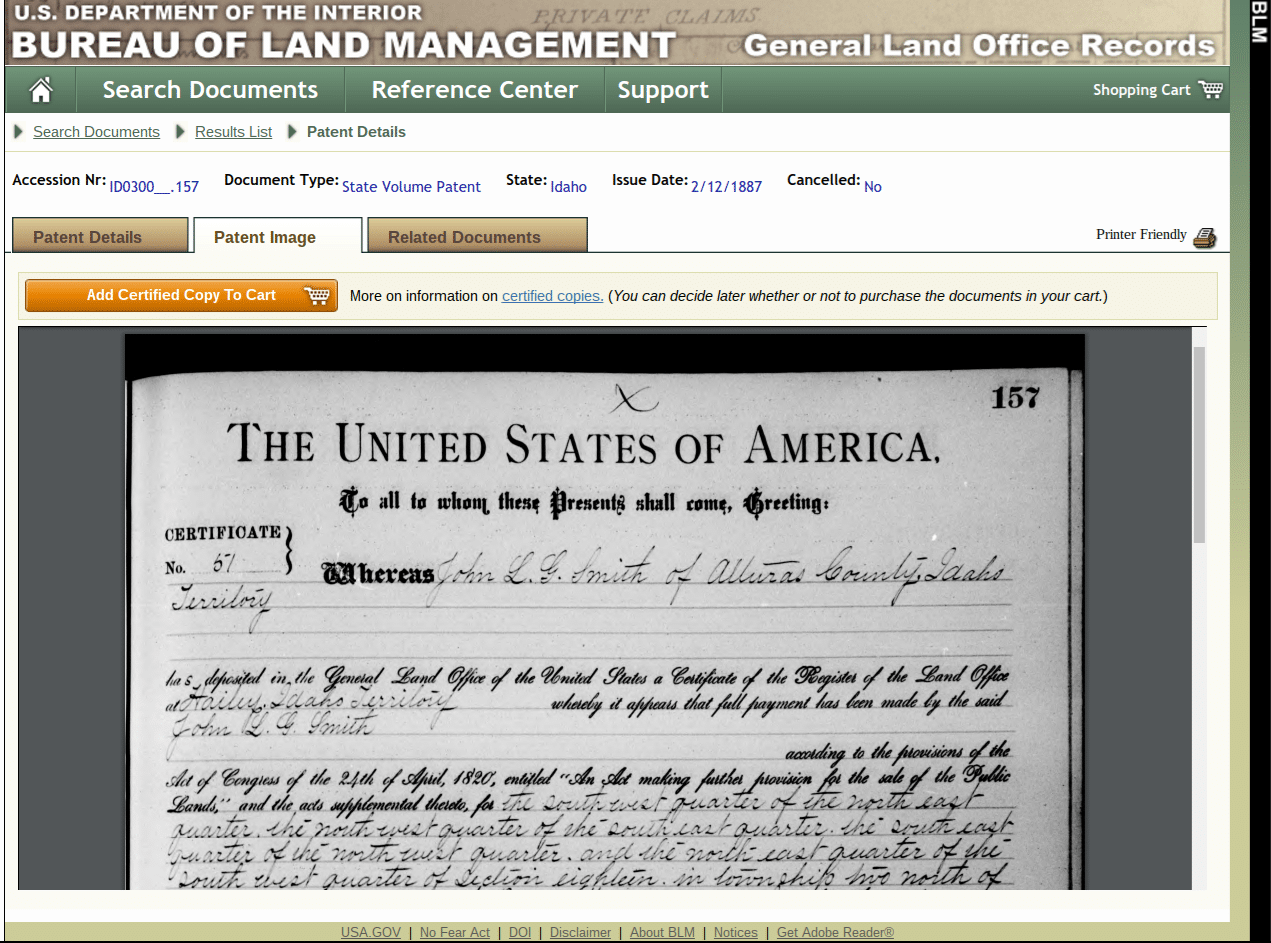
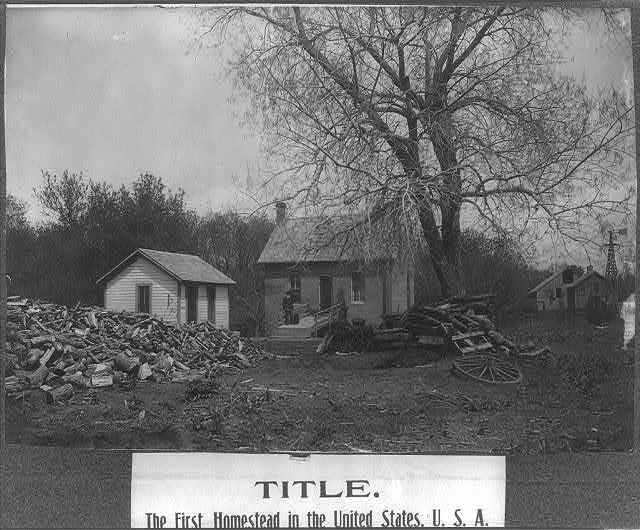
Wow! How fun! Going to try this right now. Thank you!